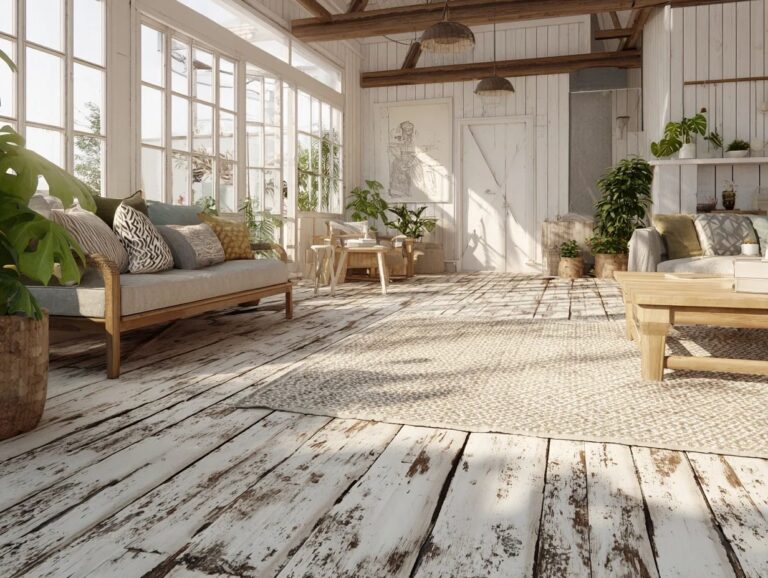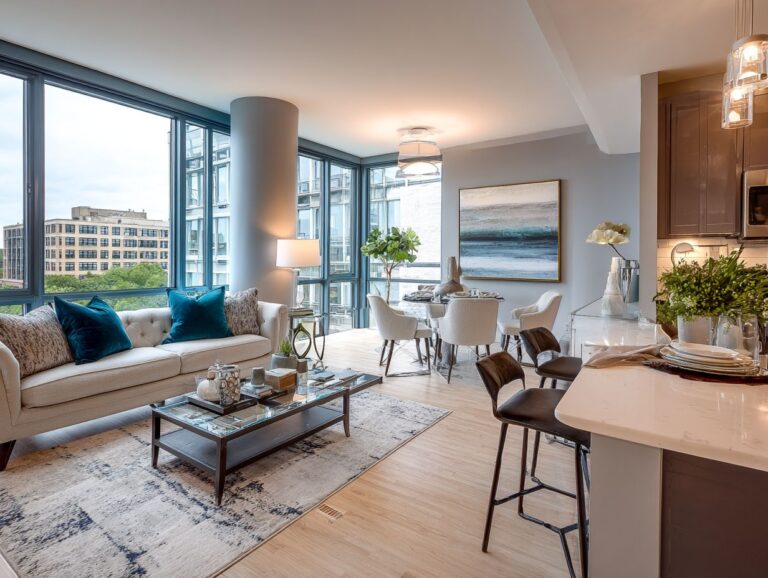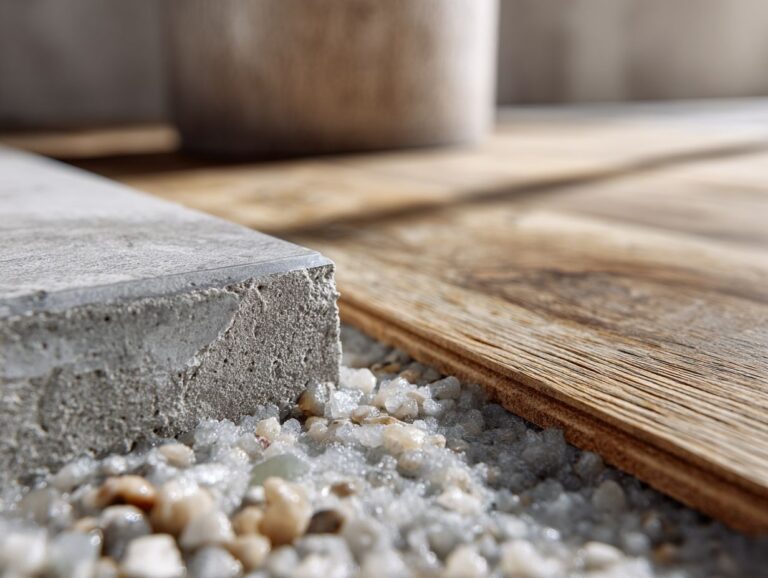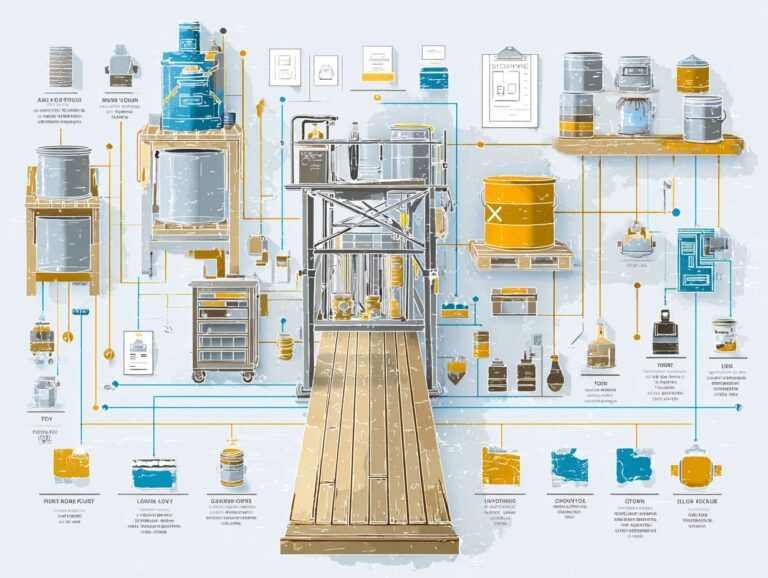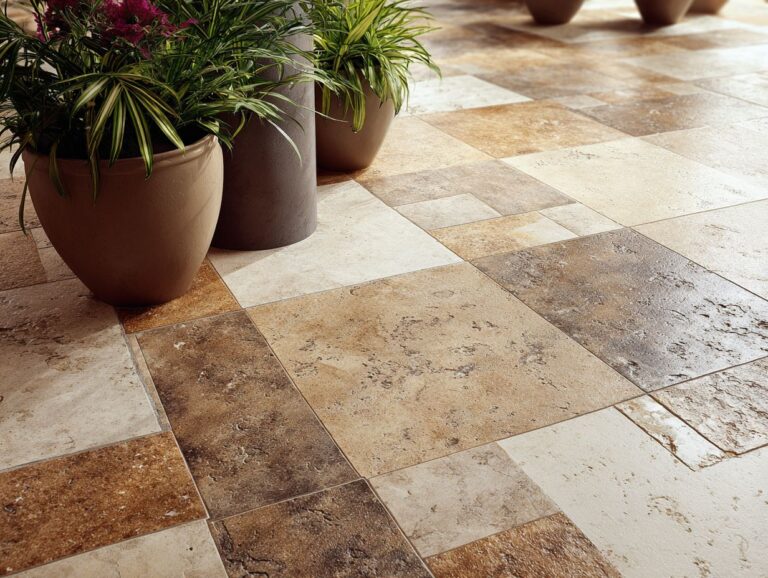Complete Guide to Hardwood Flooring Types and Species
To improve the look and increase the resale value of your new house, choosing the right hardwood floors is essential. With options like oak and red oak, each wood floor offers unique characteristics. This complete guide to hardwood flooring types and species will help you select the best option, understand the benefits of hardwood installation, and make a wise choice that enhances your home and its worth.
Key Takeaways:
Contents
- Types of Hardwood Flooring
- Hardwood Flooring Market Analysis
- Common Hardwood Species
- Less Common Hardwood Species
- Choosing the Right Hardwood Flooring
- Installation Methods
- Frequently Asked Questions
- What are the different types of hardwood flooring?
- What is the difference between hardwood and softwood floors?
- Which species of hardwood are best for high-traffic areas?
- How do I choose the right hardwood flooring for my home?
- Can hardwood flooring be installed in a basement?
- What is the maintenance required for hardwood flooring?
What is Hardwood Flooring?
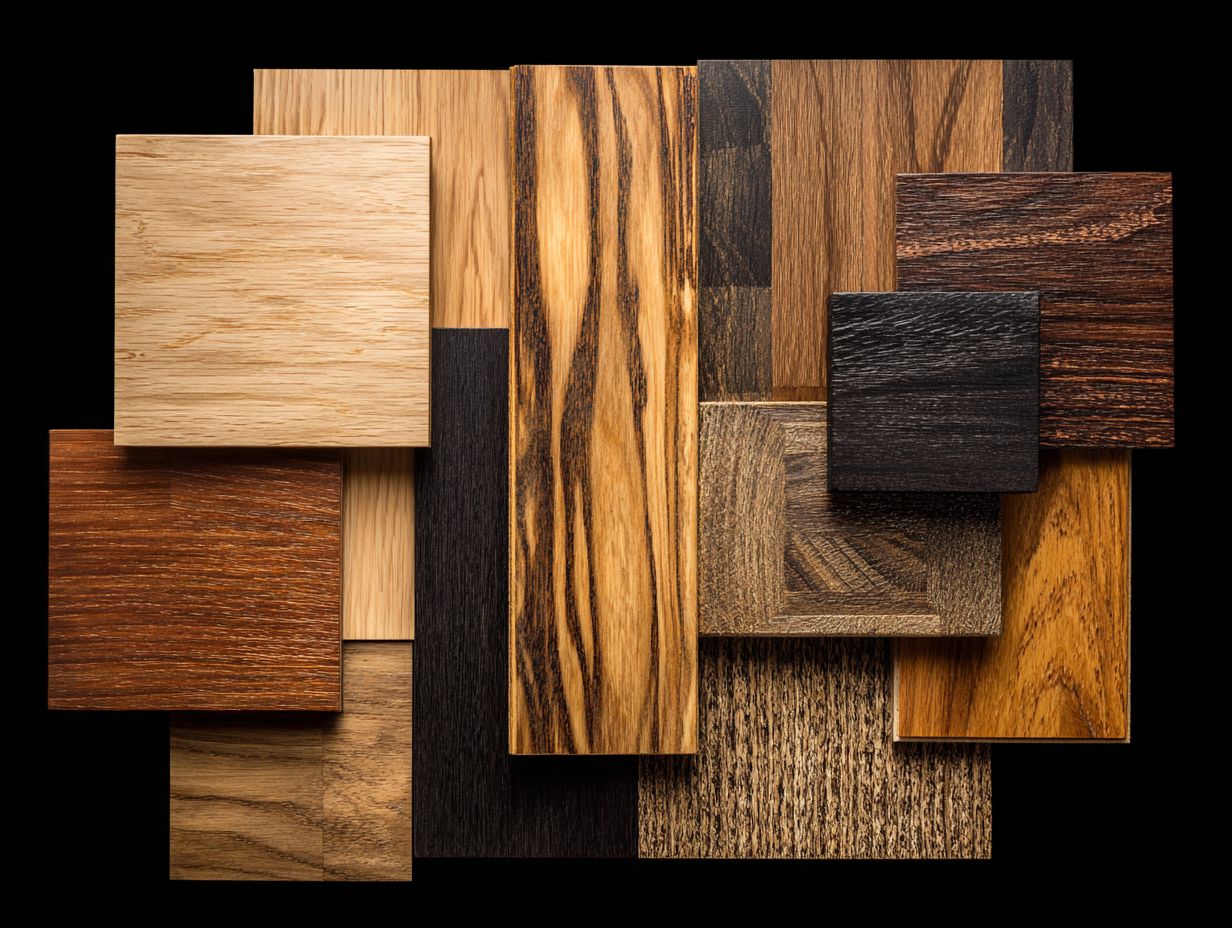
Hardwood flooring consists of solid or engineered wood products designed for durability and aesthetic appeal, with options ranging from oak to cherry.
Solid hardwood is made from one piece of wood, valued for its strength and durability. Engineered wood is built from multiple layers, which helps it manage moisture and temperature fluctuations more effectively.
Common species include:
- Oak, known for its strength and versatility;
- Maple, which provides a lighter hue;
- Cherry, celebrated for its rich color and warmth.
Every type needs experienced work because the milling process affects the floor’s durability and look.
Consider your environment and lifestyle when choosing; for instance, if moisture is a concern, engineered wood may be the better option.
Benefits of Hardwood Flooring
Hardwood flooring offers many benefits, such as strong durability, attractive appearance, and can last 20-30 years with good care.
Besides these features, hardwood flooring provides some particular advantages. It requires minimal maintenance, only needing periodic sweeping and occasional refinishing.
It’s an eco-friendly choice, derived from renewable resources. Research indicates that homes with hardwood floors can sell for 2.5% more, making them a wise option for selling later. For example, a property in a suburb of Chicago saw a 10% increase in offers after installing natural oak flooring.
Choosing this option can greatly improve both the appearance and worth of your home.
Types of Hardwood Flooring
Picking the right kind of hardwood flooring is important because different types match different tastes, budgets, and installation needs.
Hardwood Flooring Market Analysis
Hardwood Flooring Market Analysis
Market Growth and Size: Market Growth
The Hardwood Flooring Market Analysis gives a detailed look at how the industry is growing, showing how the market size changes and the yearly growth rates. It is important for stakeholders and investors to understand these measurements to make informed choices in the flooring industry.
Market Growth and Size data reveals significant expansion from $33,279.5 million in 2019 to a projected $41,682.2 million by 2027. This increase represents a 3.6% compound annual growth rate (CAGR), indicating steady demand driven by factors such as residential and commercial construction growth, renovation projects, and consumer preference for aesthetic and durable flooring solutions.
- The market is set to further expand to $69,780 million by 2033, reflecting an adjusted 3.42% CAGR from 2025 to 2033. This continued growth, though slightly slower than the previous period, suggests sustained interest in hardwood flooring, perhaps influenced by technological advancements in production, eco-friendly practices, and new design trends.
The transition from $33,279.5 million in 2019 to $69,780 million in 2033 shows the strength of the hardwood flooring market, providing good chances for investment and growth. As consumers put more importance on quality and eco-friendly practices, businesses in this area might need to create new products and find sustainable sources to take advantage of these market changes.
Overall, the Hardwood Flooring Market Analysis shows an industry ready to expand, influenced by changing consumer choices and worldwide economic factors. The data shows a positive outlook for stakeholders who are ready to change and come up with new ideas to meet market needs.
Solid Hardwood Flooring
Solid hardwood flooring is made from one piece of wood, offering excellent strength and long-lasting use, perfect for types of wood like oak and maple.
Thickness options typically range from 3/4 inch to 5/16 inch, impacting both feel and installation method.
Nail-down installations are ideal for solid hardwood, but make sure your subfloor is level and dry. Ideal environments include living areas and bedrooms, as the wood can swell in humidity, leading to gaps.
Prices generally hover between $5 to $10 per square foot, and maintenance requires periodic refinishing to maintain aesthetics and protect against wear.
Engineered Hardwood Flooring
Engineered hardwood flooring consists of multiple layers, which increases stability and moisture resistance. This makes it a good choice for different places, such as basements.
Practical price points for engineered hardwood range from $3 to $8 per square foot, providing an affordable alternative to solid hardwood, which often starts at $8 per square foot.
The installation can be done by nailing, gluing, or floating, and it works with different subfloor types.
Engineered hardwood works better than solid hardwood in humid environments because its layers help prevent warping.
Taking care of it is easy. Just sweep regularly and mop with a damp cloth once in a while. It’s a sensible option for busy homes.
Reclaimed Hardwood Flooring
Reclaimed hardwood flooring is sourced from old buildings and structures, providing a unique, eco-friendly option rich in history and character.
This type of flooring has many benefits, including being eco-friendly, as it reduces the demand for new wood and helps cut down on waste.
Aesthetically, each plank boasts unique textures and colors, allowing for creative interior designs.
Prices typically range from $8 to $15 per square foot, fitting various budgets.
To maintain its beauty, regularly clean with a soft broom or a damp cloth and use a wood-friendly cleaner. This care keeps your reclaimed hardwood looking great in modern spaces for many years.
Common Hardwood Species
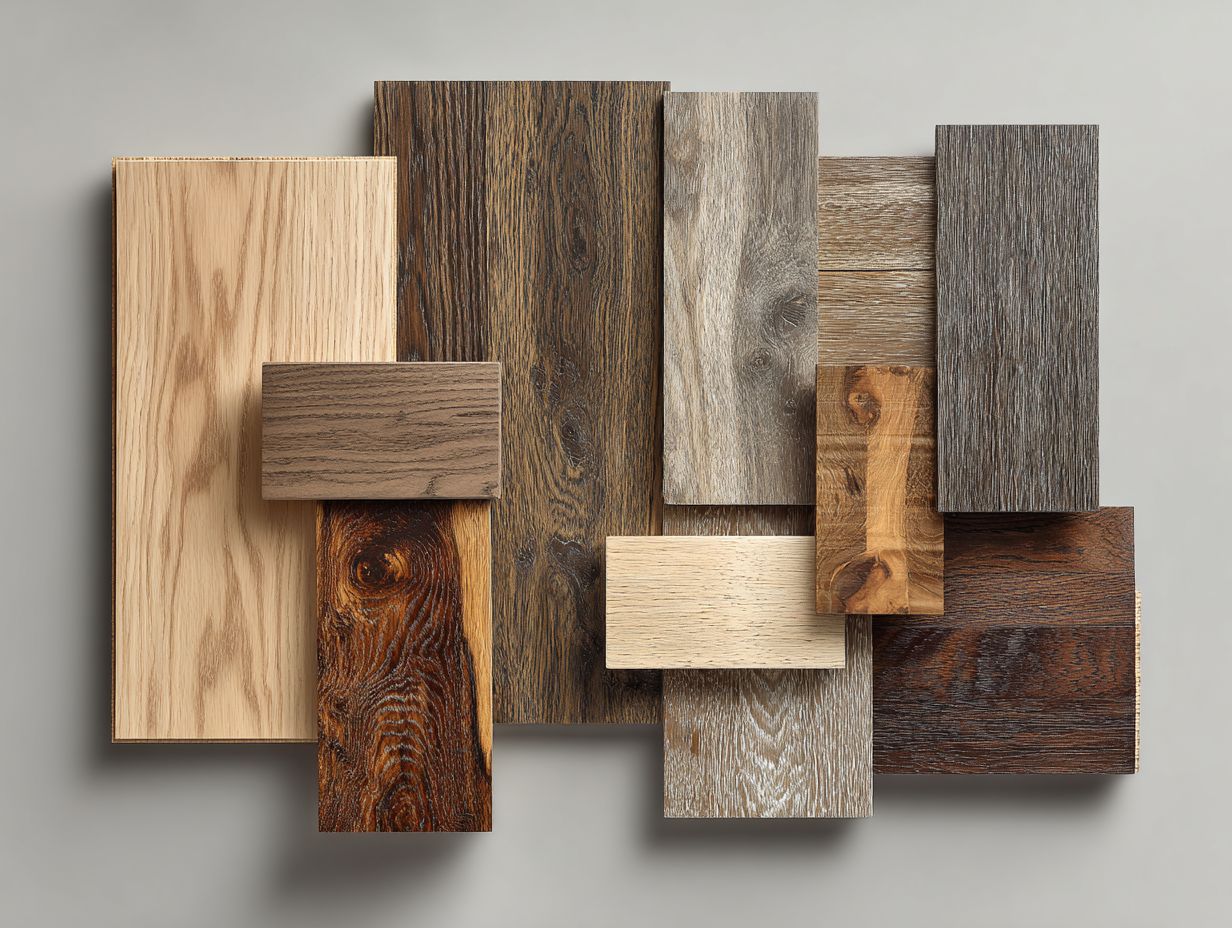
Choosing the right type of hardwood is important for both the look and strength of flooring. There are many popular options to choose from.
Oak
Oak hardwood, renowned for its strength and versatility, comes in two primary varieties: red oak and white oak, both offering distinct grain patterns and hues.
Red oak has a warm, reddish color and a Janka hardness score of 1,290, which makes it a good choice for flooring and furniture.
White oak, on the other hand, is more durable with a Janka rating of 1,360, often used in outdoor applications due to its resistance to moisture.
Both types typically range from $4 to $9 per square foot.
Regular upkeep involves using a cleaner that doesn’t affect the pH balance for cleaning and applying a high-quality wood finish every few years to keep them looking good and durable.
Maple
Maple hardwood is valued for its smooth, even grain and naturally light color, which makes it a great option for modern home designs.
With a Janka hardness rating of 1,450, maple is sturdy enough for high-traffic areas, such as living rooms and hallways, yet stylish for bedrooms and dining spaces.
Prices are between $4 and $8 per square foot, making it a relatively affordable choice compared to other types of hardwood.
To maintain its finish, regularly dust and occasionally use a damp mop with a gentle cleaner. Avoid harsh chemicals to preserve its light color and sheen, ensuring that your maple flooring remains beautiful for years to come.
Cherry
Cherry hardwood is known for its rich, warm tones that deepen over time, adding elegance to any space while requiring specific care to maintain its luster.
To protect cherry hardwood from scratches, consider applying a high-quality finish such as polyurethane or water-based varnish, which can cost between $5 and $12 per square foot.
Regular cleaning with a microfiber cloth and a pH-balanced wood cleaner helps preserve its natural beauty. The wood has a Janka hardness of 950, indicating it’s tough enough for different uses like furniture, cabinets, and floors. This makes it a great option for homes with average foot traffic.
Opt for area rugs in high-traffic zones for added protection.
Walnut
Walnut wood is famous for its rich, dark shade and attractive patterns, making it a common option for luxury interior designs.
With a Janka hardness rating of 1,010, walnut offers a balance of durability and ease of maintenance. The price is usually between $6 and $12 per square foot, offering an affordable high-end option.
Regular cleaning with a damp mop and occasional application of a wood conditioner will preserve its beauty over time. Choosing walnut can greatly improve the look of rooms, adding warmth and style, particularly in living rooms and dining areas where its distinctive grain can really be noticed.
Less Common Hardwood Species
Some less common hardwoods provide distinct beauty and usefulness that go beyond standard choices for those who want something different.
Birch
Birch wood is known for its smooth texture and light color, which makes it a favorite for modern and simple design styles.
With a Janka hardness rating of 1,300, birch offers impressive durability, suitable for high-traffic areas like kitchens and hallways. It typically costs between $4 and $7 per square foot, depending on the grade and finish.
For maintenance, regular sweeping and occasional mopping with a gentle cleaner will preserve its beauty. Applying a wood conditioner and a new finish every few years can help stop scratches and stains, keeping your birch surfaces in good condition and extending their lifespan.
Mahogany
Mahogany hardwood stands out for its deep, reddish-brown color and exceptional durability, often used in high-end applications and furniture.
With a Janka hardness rating of 1,500, mahogany is very durable, which makes it a great choice for flooring and cabinets.
Typically, prices range from $8 to $15 per square foot, depending on the grade and finish. To preserve its luxurious appeal, regular dusting and occasional polishing with a high-quality wood conditioner are recommended.
Avoid exposure to direct sunlight to prevent fading, and maintain humidity levels in your home to prevent cracking or warping.
Follow these care tips to keep your mahogany furniture looking good for a long time.
Teak
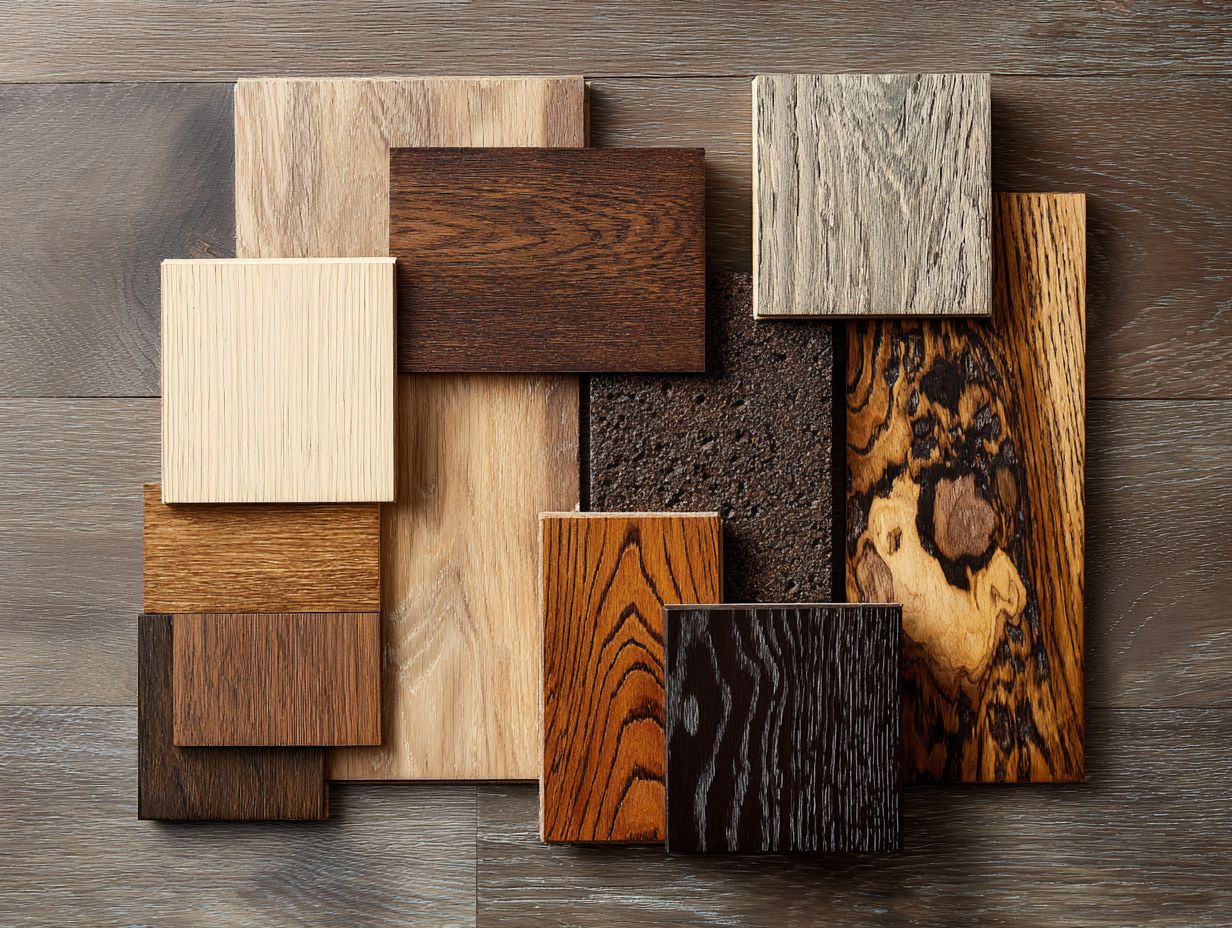
Teak wood is known for resisting water and insects, which makes it a popular option for outdoor use and places with high humidity.
Besides being long-lasting, teak wood is hard with a Janka rating of 1,070, meaning it’s strong and resistant to damage. Pricing typically ranges from $10 to $20 per square foot, depending on the quality.
Maintenance involves periodic oiling to preserve its rich golden color and prevent water damage. Environmentally, sustainable teak is sourced from responsibly managed plantations, ensuring minimal ecological impact.
This combination of strength, beauty, and environmental consideration solidifies teak as an excellent flooring option for both residential and commercial spaces.
Choosing the Right Hardwood Flooring
Choosing hardwood flooring involves considering factors like how you live, what you can afford, and how you want your home to look.
Factors to Consider
When picking hardwood flooring, think about how much foot traffic the area gets, if it’s likely to get wet, and the look you want to match with your home.
High traffic areas, such as hallways or living rooms, benefit from more durable hardwoods like oak or hickory, known for their hardness and scratch resistance. In moisture-prone regions, bamboo or engineered wood is preferable due to their stability.
For design, choose a color and grain pattern that complements your existing dcor-light woods like maple brighten spaces, while darker tones like walnut evoke warmth.
Use a checklist to evaluate your needs:
- assess room usage,
- review climate considerations,
- match colors with your furniture and wall tones.
Cost Considerations
Knowing the cost of hardwood flooring means looking at both the price per square foot and the installation costs, which can change a lot depending on how it’s done and how complicated the job is.
When budgeting for hardwood flooring, consider these three factors:
- Materials
- Installation
- Maintenance
Materials generally range from $3 to $15 per square foot, depending on the type of wood. For installation, expect costs between $2 to $5 per square foot, influenced by the complexity of the job. Maintenance can add $0.50 to $1 per square foot annually for products like wood cleaners and sealants.
For a 1,000 square foot project, your total investment could range from $5,500 to $18,000, including all elements.
Durability and Maintenance
Hardwood flooring lasts and looks good for 20-30 years if cared for properly.
To extend this lifespan, regular maintenance is key.
Begin with cleaning your floors weekly using a microfiber mop and a gentle hardwood floor cleaner, such as Bona or Murphy Oil Soap. Consider refinishing every few years to prevent scratches and damage. This process involves sanding and applying a new finish; products like Minwax or Varathane can provide excellent results.
Placing rugs in high-traffic areas and using felt pads under furniture can greatly reduce damage. These methods make your hardwood floors last longer and keep their natural look.
Installation Methods
Knowing about different ways to install hardwood flooring helps you pick the right method for your room and abilities.
Glue-Down Installation
Glue-down installation is a popular method for engineered hardwood, offering strong adhesion and stability, particularly in moisture-prone areas.
Before you start gluing, make sure the subfloor is clean and dry. Use polyurethane or water-based adhesive suitable for hardwood, applying it in a serpentine pattern across the floor.
Lay down planks, pressing firmly to eliminate air pockets. This method suits various wood types, including oak and hickory, maximizing moisture resistance.
Average costs for materials range from $1.50 to $3.00 per square foot, with labor adding an additional $2.00 to $4.00 per square foot. This makes it an affordable option for those wanting to improve the strength of their flooring.
Nail-Down Installation
Installing solid hardwood floors with nails is the traditional method, providing a secure fit that ensures durability and stability over time.
To install hardwood floors using the nail-down method, you’ll need a few essential tools:
- a pneumatic nail gun
- cleat nails
- a tape measure
- a saw
Begin by acclimating the hardwood in the room for at least 48 hours. Next, lay down a vapor barrier and start nailing boards down, ensuring each board fits snugly against the previous one. Use your tape measure to maintain consistent spacing along the edges.
This method costs approximately $3-$6 per square foot, depending on wood type and finishes, but results in a professional-grade installation.
Floating Installation
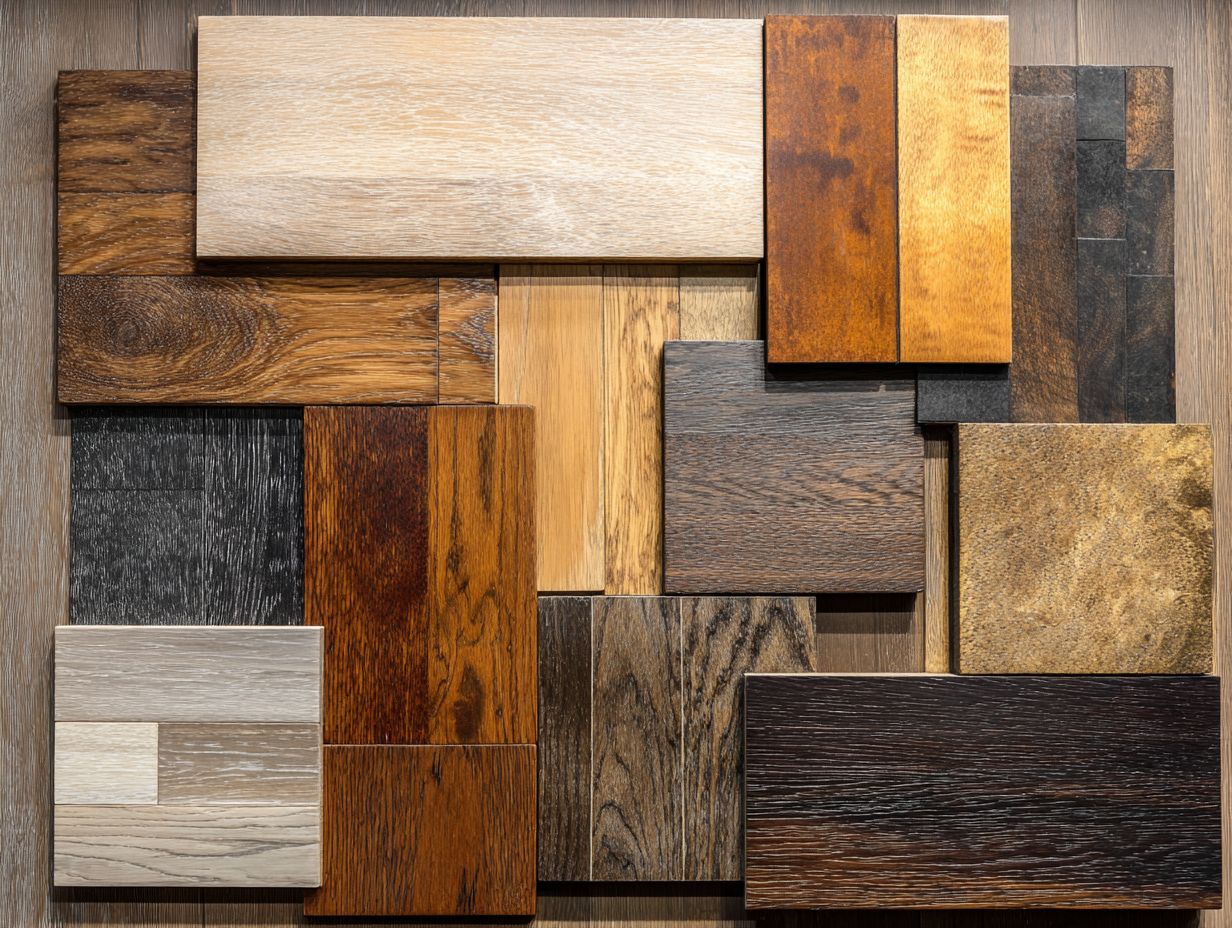
Floating installation is an easy option for do-it-yourself enthusiasts. It lets hardwood lie on the subfloor without being fixed, which is perfect for engineered wood.
This technique involves laying down a foam underlayment to absorb sound and provide cushioning, followed by planks that interlock at the edges.
- Start by measuring your room and purchasing sufficient planks (about $3 to $7 per square foot) and underlayment (around $0.50 to $1 per square foot).
- After preparing the subfloor, lay the underlayment, then begin installing the planks from one corner and work outwards.
This method makes it easy to install and remove if needed. Many homeowners prefer it.
Frequently Asked Questions
What are the different types of hardwood flooring?
Hardwood flooring can be divided into three main types: solid, engineered, and floating. Solid hardwood is made from a single piece of wood and can be sanded and refinished multiple times. Engineered hardwood is made of multiple layers of wood, with a top layer of real hardwood. Floating hardwood is made of thinner pieces of wood that interlock and can be installed without nails or glue.
What is the difference between hardwood and softwood floors?
The main difference between hardwood and softwood floors is the type of tree they are made from. Hardwood floors come from deciduous trees, while softwood floors come from coniferous trees. Hardwood floors tend to be more durable and have a longer lifespan, while softwood floors are more affordable and can be easier to install.
Which species of hardwood are best for high-traffic areas?
Some of the best hardwood species for high-traffic areas include oak, hickory, and maple. These species are known for their durability and resistance to wear and tear. They have an attractive grain pattern that can conceal scratches and dents, making them perfect for high-traffic areas of the home.
How do I choose the right hardwood flooring for my home?
When choosing hardwood flooring, consider the style and dcor of your home, the level of foot traffic in the area, and your budget. You may also want to consider the hardness and color of the wood. It’s important to consult with a flooring specialist to help you make the best decision for your specific needs.
Can hardwood flooring be installed in a basement?
Yes, hardwood flooring can be installed in a basement, but it may not be the best choice due to the potential for moisture and humidity. Engineered hardwood or laminate flooring may be better options for basements, as they are more resistant to moisture and can be installed as a floating floor without the need for adhesives.
What is the maintenance required for hardwood flooring?
Hardwood flooring requires regular maintenance to keep it looking its best. This includes sweeping or vacuuming to remove dirt and debris, and occasionally using a hardwood floor cleaner to remove any build-up. Regularly inspecting and addressing any scratches or dents can also help prolong the lifespan of your hardwood floors.
